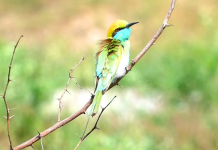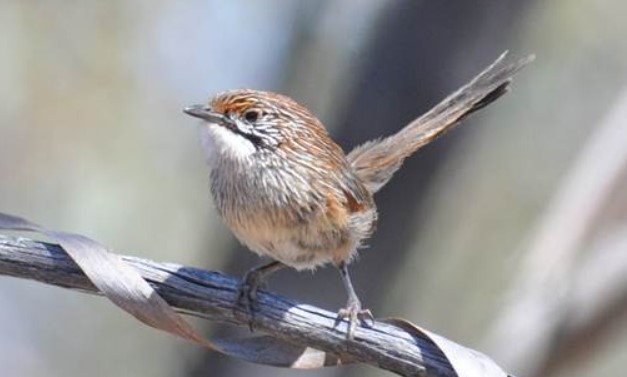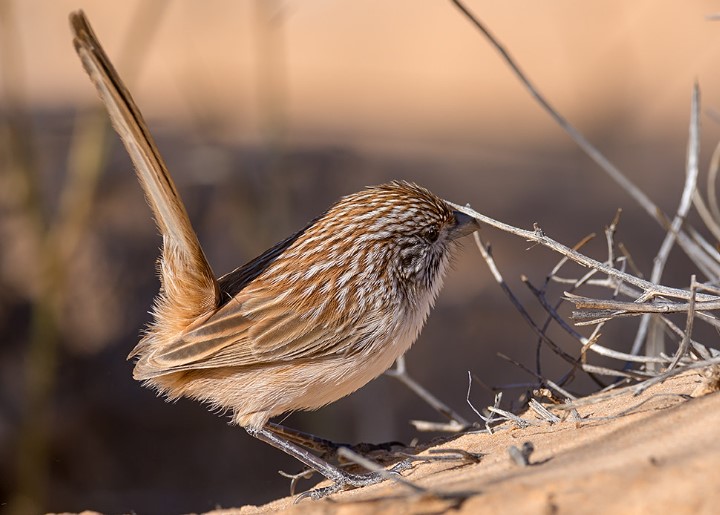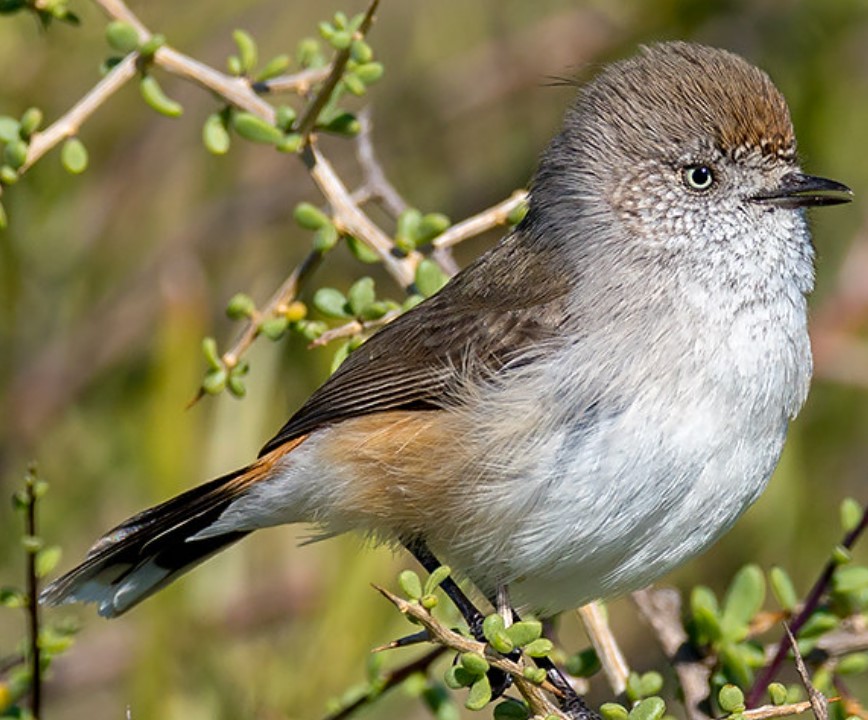CORACIIFORMES is a morphologically heterogeneous group of colorful birds, with large heads, short necks, short legs, and, mostly, large bills. They comprise the kookaburras and kingfishers, todies, motmots, bee-eaters, and rollers. These birds are widely distributed, occurring on all continents except Antarctica. However, most species occur in Asia and Africa. In total, there are about 147 to 157 species in about 29–40 genera. So far, nine families recognized here are listed below.
(1) ALCEDINIDAE: River kingfishers; about 22 to 24 species in two to four genera: Alcedo and Ceyx (sometimes Ispidina or Myioceyx also recognized); mostly distributed in Africa, Asia, Indonesia, the Philippines, Melanesia, New Guinea, and Australia. There are two species of Alcedo in the HANZAB region.
(2) HALCYONIDAE: Tree or wood kingfishers; 56–61 species in 8–12 genera; distributed in Africa, Asia, Indonesia, Papuasia, Micronesia, Polynesia, and Australia & New Zealand. There are eight non-vagrant species in four genera in the HANZAB region.
(3) CERYLIDAE: Water (or belted) kingfishers; nine species in three genera: Chloroceryle, Megaceryle, and Ceryle; distributed in Africa, Southeast Asia, and the New World.
(4) MEROPIDAE: Bee-eaters; 24 to 26 species in three genera: Nyctyornis, Meropogon, Merops; distributed in Africa, South and East Asia, Indonesia, Melanesia, New Guinea, and Australia. One species, Rainbow Bee-eater Merops ornatus, in the HANZAB region.
(5) CORACIIDAE: Rollers; around twelve species in two genera: Coracias & Eurystomus; distributed in Africa, South and East Asia, Indonesia, the Philippines, New Guinea, and Australia. One species, Dollarbird Eurystomus Orientalis, breeds in the in the HANZAB region; another species is vagrant.
(6) BRACHYPTERACIIDAE: Ground-rollers; about five species in three genera, which are Atelornis, Brachypteracias, Uratelornis, mostly endemic to the African country of Madagascar.
(7) LEPTOSOMIDAE: Monotypic Cuckoo-Roller Leptosomus discolor, endemic to Comoro.
(8) TODIDAE: Todies; about 5 species in the monotypic genera Todus; widely distributed Caribbean islands of Cuba, Hispaniola, Jamaica, and Puerto Rico.
(9) MOMOTIDAE: Motmots; 8 or 9 species in six genera: Aspatha, Baryphthengus, Electron, Eumomota, Hylomanes, and Momotus. These species are widely distributed in the Neotropics, from Mexico to Argentina.
Taxonomy of this and related groups is somewhat controversial. The monophyly of the Coraciiformes has been variously questioned and supported, and further study is required. Maybe polyphyletic (BWP), has been split into as many as six orders. Recent views tend to identify one order, but the treatment of sub-ordinal taxa varies.
Conventionally, all kingfishers have been treated as a single-family, Alcedinidae, with three subfamilies here, these subfamilies elevated to familial level. The division into three families is supported by DNA-DNA hybridization and chromosome studies, but this view has been challenged since these three groups are also considered monophyletic with respect to their nearest relatives within Coraciiformes.
The most closely related groups are Trogoniformes (trogons), Upupiformes (hoopoes), and Bucerotiformes (hornbills). These, too, have also been classified as families within the Coraciiformes. Other distantly allied groups include Galbuliformes (jacamars and puffbirds) and Piciformes (toucans, barbets, honeyguides, and woodpeckers).
Moreover, Coraciiformes are a diverse group, with few anatomical characters that apply to all families. Palate desmognathous. Feet vary; they usually have three toes directed forward and a hallux, but the inner front toe is reduced or missing in some Alcedinidae. The outer toe is reversible in Leptosomidae; the forward toes are often fused or partly fused. Basi pterygoid process absent or rudimentary Hypotarsus complex.
Plumage is bright, mainly iridescent or pigmentary greens and blues. There are rarely different variations in plumage between ages or sexes. Not well represented in the HANZAB region; four families were recorded, with 12 non-vagrant species in seven genera. Extralimital families are not considered further here. The Coraciiformes occur in most habitats, from arid to semi-arid zones to tropical rainforests and mangroves.
Kingfishers, rollers, and bee-eaters all require habitats with at least a few trees, from which to hunt. All breed within hollows in branches or trunks of trees, or in tunnels excavated into banks of earth or termitaria (both arboreal and terrestrial).
In the HANZAB region, some species (e.g., Laughing Kookaburra, Dacelo novaeguineae) may benefit from partial clearance of wooded habitats, though most are adversely affected by the removal of hollow-bearing trees; others (e.g., Azure Kingfisher, “Alcedo azurea”) adversely affected by the removal or degradation of vegetation surrounding wetlands.
Generalized predators of arthropods and small vertebrates. Most are sit-and-wait predators; most hunt by sallying. With few exceptions, normally kingfishers do not pursue prey, contrasting bee-eaters, which do. Both kingfishers and bee-eaters regurgitate pellets of indigestible material, such as insect sclerites. In kingfishers, bee-eaters, and rollers, the hatching of broods is always staggered, with up to a 1-week difference between the oldest and youngest nestlings.
Nestlings squabble for food brought by parents, and nestlings soon learn to move toward the entrance of the nest when they perceive the parent entering with food. If there are two or more nestlings, the eldest (unless replete) typically takes a protuberant position when the food arrives.
However, when the food is scarce, only older nestlings are fed and others starve and die. Just before fledging, to encourage young people to leave the nest, adults may starve them for one to two days. Parents stay near fledglings, calling and bringing food in response to the begging of the young.
Worldwide, 11 species are considered threatened. Overall, the major threatening process is the clearance of habitat, though several species are adversely affected by the introduction of predators, particularly the Common Myna (Acridotheres tristis). Given the great similarities between Halcyonidae and Alcedinidae in social organization, behavior and most aspects of internal structure,.






